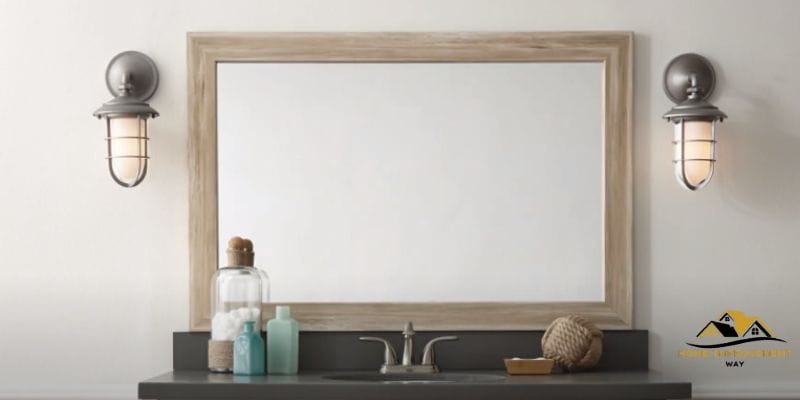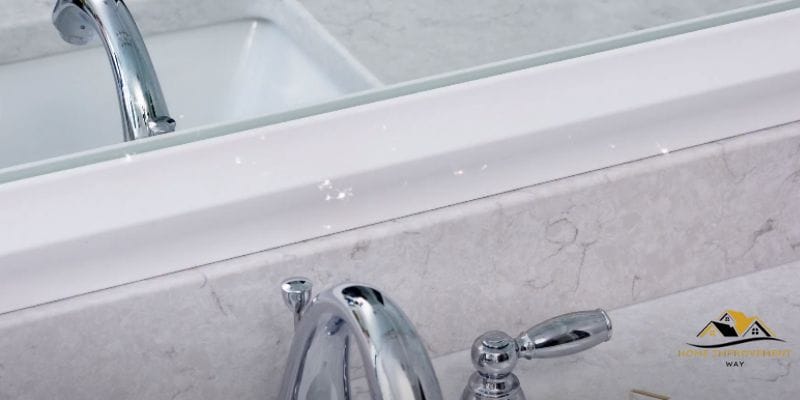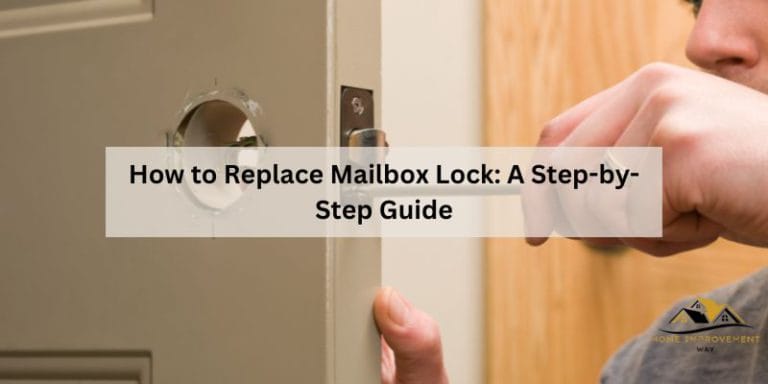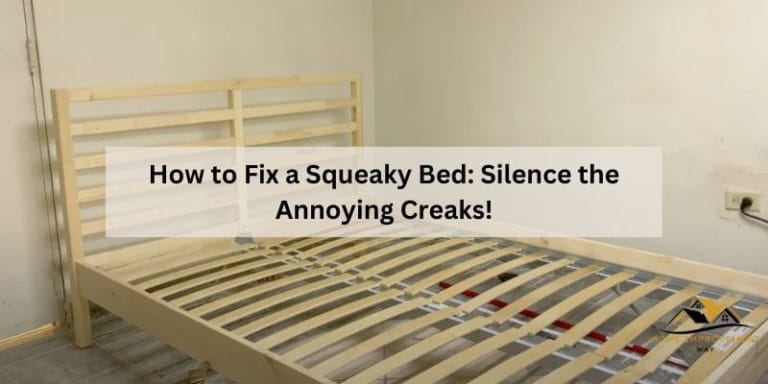How to Easily Fix Mirror Desilvering: Proven Repair Methods
To repair mirror desilvering, use a silvering kit or hire a professional glass repair service. This process will restore the mirror’s reflective surface, making it look like new.
Mirrors can add a touch of elegance and functionality to any space. However, over time, mirrors may suffer from desilvering, causing them to lose their reflective properties and appear cloudy or tarnished. If you have a mirror that has undergone desilvering, don’t worry! There are effective ways to restore its original beauty.
Whether you choose to tackle the task yourself or seek professional help, repairing mirror desilvering is a straightforward process. We will discuss the methods and techniques you can use to bring your mirror back to its former glory. Say goodbye to those unsightly blemishes and enjoy a crystal-clear reflection that will enhance your living space.
Understanding Mirror Desilvering
Mirror desilvering is a common issue that can occur over time. To repair it, you need to understand the causes and take appropriate steps. By following the right techniques, you can restore the mirror’s original beauty and functionality.
Mirror desilvering is a common problem that occurs when the reflective coating on the back of a mirror starts to deteriorate. This deterioration can lead to a cloudy or hazy appearance on the mirror’s surface, affecting its overall clarity and reflectivity. If you’ve noticed that your mirror has lost its shine, it’s likely experiencing desilvering. In this section, we will delve into the details of what mirror desilvering is, its causes, and how you can repair it.
What is mirror desilvering?
Mirror desilvering refers to the process in which the reflective coating on a mirror becomes damaged or deteriorated over time. This coating, usually made of silver or aluminum, is responsible for the mirror’s ability to reflect light and produce a clear image. When the reflective coating starts to break down, it can create imperfections on the mirror’s surface, resulting in a less vibrant and distorted reflection. Desilvering is a natural occurrence that can happen over time due to various factors, but luckily, it can be repaired.
Causes of mirror desilvering
Several factors can contribute to mirror desilvering. Understanding these causes can help you prevent or address the issue effectively. Here are the most common causes:
1. Moisture and humidity: Excessive exposure to moisture and humidity can cause the mirror’s reflective coating to degrade and peel off. Bathrooms and other areas with high humidity levels are particularly vulnerable to this problem.
2. Chemical exposure: Certain chemicals, such as ammonia-based cleaning solutions, can react with the mirror’s coating and cause it to deteriorate. It is crucial to avoid using harsh chemicals when cleaning your mirrors to prevent desilvering.
3. Age and wear: Over time, the mirror’s reflective coating can naturally wear off due to everyday use and exposure to environmental factors. Old or antique mirrors are more prone to desilvering since their reflective coatings may be less durable.
4. Incorrect installation: Improper installation or mounting of the mirror can lead to stress on its surface, causing the reflective coating to peel or crack. It is essential to ensure proper support and handling during installation to avoid damage.
Now that you understand what mirror desilvering is and the common causes behind it, you can take the necessary steps to repair and prevent further deterioration. In the next sections, we will discuss some effective methods to repair mirror desilvering and offer tips to maintain your mirrors’ longevity.

Identifying Mirror Desilvering
If you’re faced with a damaged or deteriorating mirror, it’s important to identify the problem correctly. One common issue that may arise is mirror desilvering, where the mirror coating starts to deteriorate, resulting in a cloudy or streaky appearance. Identifying mirror desilvering is crucial to determine the appropriate repair method. In this article, we’ll discuss the signs of mirror desilvering and provide DIY tests to help you confirm the presence of this problem.
Signs Of Mirror Desilvering
Before diving into the DIY tests for mirror desilvering, it’s helpful to understand the signs that may indicate this issue:
- Cloudy or streaky patches on the mirror surface
- Loss of reflectivity, making the mirror appear dull or hazy
- Black spots or blotches on the mirror
- Discoloration or yellowing of the mirror coating
These signs are indicators that the mirror’s silvering layer might be deteriorating, resulting in a compromised reflective surface. If you notice any of these signs, it’s essential to take further steps to confirm the presence of mirror desilvering.
Diy Tests For Mirror Desilvering
If you suspect that your mirror is experiencing desilvering, there are a few simple DIY tests you can perform to confirm the issue:
- Paper Test: Place a plain white sheet of paper behind the mirror and observe the reflection. If you notice black spots or blotches on the reflected image, it indicates desilvering.
- Fingernail Test: Gently scrape a small area of the mirror with your fingernail. If the coating easily flakes off, it’s likely desilvering.
- Hot Water Test: Dampen a cloth with hot water and gently rub a small area of the mirror surface. If the silvering layer comes off easily or leaves residue on the cloth, it confirms the presence of mirror desilvering.
These DIY tests provide initial confirmation of mirror desilvering. However, it’s always recommended to consult a professional for a more accurate assessment and proper repair guidance.
Proven Repair Methods For Mirror Desilvering
Mirror desilvering can be a frustrating problem that affects the appearance and functionality of your mirrors. Thankfully, there are proven repair methods that you can use to fix mirror desilvering and restore the beauty of your mirrors. In this guide, we will walk you through three effective repair methods: removing the damaged silver coating, reapplying a new silver coating, and taking preventive measures to avoid future desilvering issues.
Removing Damaged Silver Coating
If you notice areas on your mirror where the silver coating has become damaged or worn out, it is important to remove it before applying a new coat. Here’s how you can do it:
- Clean the mirror surface thoroughly using a mild glass cleaner or a mixture of vinegar and water.
- Apply a commercial silver stripper or ammonia to a soft cloth or sponge.
- Gently rub the damaged areas of the mirror in circular motions until the silver coating begins to lift off.
- Rinse the mirror with clean water and dry it using a lint-free cloth.
Reapplying Silver Coating
After removing the damaged silver coating, you can proceed with reapplying a new silver coating to the mirror. Follow these steps to ensure a successful application:
- Protect the edges of the mirror with painter’s tape to prevent the silver coating from pooling onto the sides.
- Apply a thin and even layer of silvering solution to the mirror surface using a sprayer or a clean, soft cloth.
- Allow the silvering solution to dry according to the manufacturer’s instructions.
- Apply a protective layer of sealer or clear lacquer to enhance the durability of the new silver coating.
- Once the sealer has dried, remove the painter’s tape and your mirror will be good as new.
Preventive Measures For Mirror Desilvering
Prevention is always better than cure! By taking some preventive measures, you can prolong the lifespan of your mirrors and minimize the risk of desilvering. Consider the following tips:
- Keep your mirrors away from areas with high humidity and moisture.
- Avoid using abrasive cleaners or harsh chemicals on the mirror surface.
- Use a soft, lint-free cloth or microfiber cloth to clean your mirrors.
- Apply a protective coating or wax to the mirror surface to minimize the effects of oxidation.
- Regularly inspect your mirrors for signs of desilvering and address any issues promptly.
By following these simple preventive measures, you can enjoy clear and elegant mirrors for years to come.

Conclusion
To sum up, repairing mirror desilvering can be a simple and cost-effective task with the right knowledge and tools. By following the steps mentioned in this blog post, you can restore the beauty and functionality of your mirrors. Remember to handle the process with care and seek professional help if needed.
Say goodbye to those unsightly black spots and enjoy the clear reflections once again!







